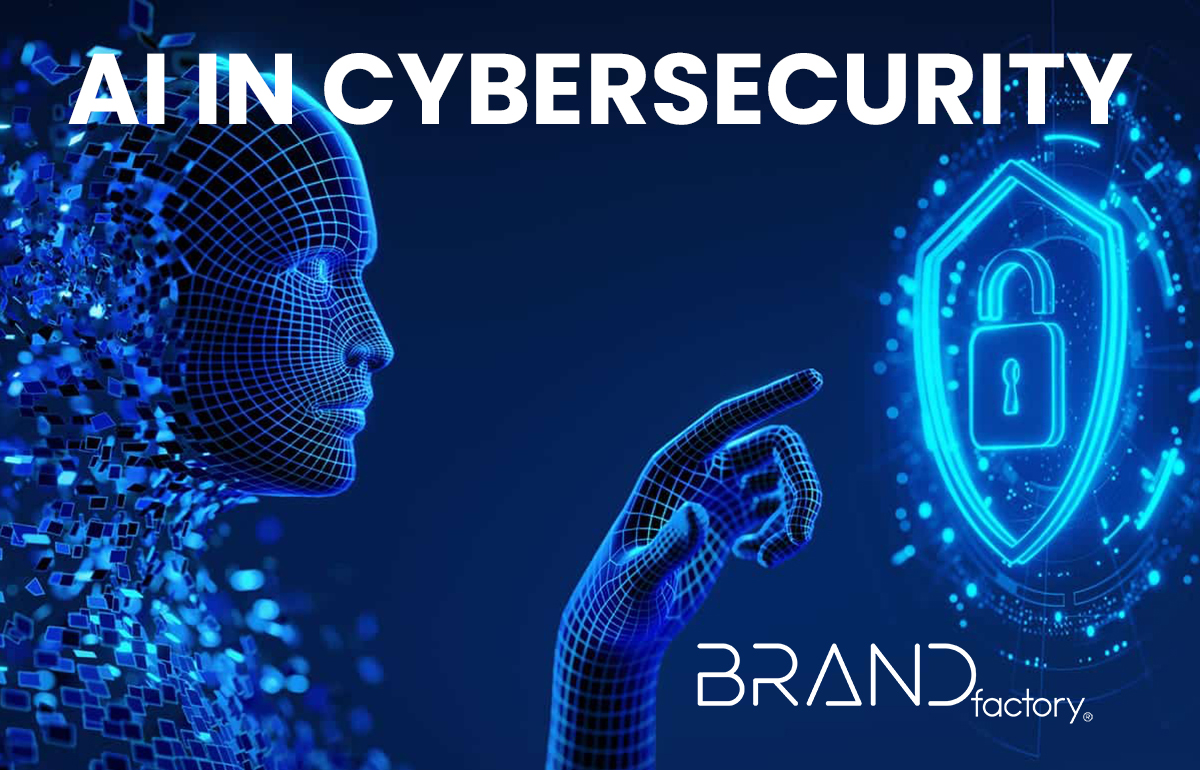DATA INTEGRITY
The Forefront of Security
PROTECTING THE INTEGRITY OF DECISION-MAKING PROCESSES
DATA ACCURACY & AUTHENTICATION
In an era where data accuracy (and authentication) is more valuable than gold, protecting its integrity is not just an IT function; it is a core business imperative. Standard encryption is the baseline, but sophisticated threats, including those from emerging quantum computers, will require a multi-layered defense strategy.

The architectual approach we are developing, when implemented, will prove to be the most advanced data integrity methodology ever introduced. This architectual wonder will create a digital fortress around critical assets. This goes beyond simply locking the door; it involves creating a system where data is self-verifying, tamper-evident, and resilient against the threats of tomorrow. The ROI here is not just about preventing a breach; it’s about ensuring the absolute trustworthiness (authenticity) of the data that drives every decision which organizations and government branches make — from financial reporting to strategic military planning.

ZERO-TRUST ARCHITECTURE
Our approach begins with a ’Zero Trust’ architecture, but we elevate it with proprietary protocols like our Dual Encryption Security Protocol (DESP) and Multiple Encryption Security Protocol (MESP) platforms. DESP creates two independent, non-communicating encryption layers, meaning a compromise of one layer is useless without compromising the second, (a statistically improbable event). MESP takes this further by distributing data packets across multiple, distinct encryption algorithms and cloud environments. A breach of one vector yields only a meaningless fragment of unintelligible data. This cryptographic segmentation drastically increases the computational resources required for a successful attack, pushing it beyond the practical capabilities of even the most determined state-level actors and providing a robust defense against future quantum threats.
| METHODOLOGY | PRIMARY ROI & BUSINESS VALUE |
|---|---|
| Dual/Multiple Encryption Security Protocols (DESP/MESP): | Provides "quantum-resistant" security by exponentially increasing the cost and complexity of a breach. Protects long-term data value and mitigates future threats. |
| Chip-Integrated Tokenization: | Creates unclonable hardware-based authentication, eliminating risks from stolen credentials, which are the #1 cause of data breaches. Drastically reduces attack surface. |
| Biometric & DNA-Embedded Security: | The ultimate in data protection. Binds data to a physical, inimitable object, ensuring the highest level of trust for mission-critical assets and intellectual property. |
| Zero-Trust Data Architecture: | Minimizes internal and external threats by treating every access request as a potential risk. Prevents lateral movement by attackers, containing the blast radius of any potential breach. |

NEXT-GENERATION AUTHENTICATION & VERIFICATION TECHNOLOGIES
Our decade-long research and development work has proven to be only logical to pursue. We will be bringing these technologies to market — by 2026 (Q2). To be clear, we are now seeking a joint-venture manufacturing deal which will enable Brand Factory to seamlessly integrate such next-generation authentication and verification technologies into our clients’ data structure — by merely upgrading their hardware stack! This includes exploring manufacturing-level, chip-integrated tokenization, where security credentials are physically laser etched directly into the silicon processors, making them virtually impossible to clone or extract.

THE PINNACLE OF BIOMETRIC SECURITY
For the ultimate in security, we’re also looking to pioneer methodologies involving the embedding of randomized, synthetic DNA strands into silicon wafers at the manufacturing level. Each strand will comprise a unique cryptographic "key" (digital image file), making the physical chip itself the only key that can decrypt its data. *** This represents the pinnacle of biometric security, binding data not just to a person, but to a specific, inimitable piece of hardware.

The implementation of these methodologies provides a clear and compelling ROI. According to a ’2025 IBM Security Report’: the average cost of a data breach has now surpassed USD $4.5 million, with "lost business" accounting for nearly 40% of that cost due to diminished customer trust.
By investing in a provably secure data integrity framework, you are not just buying insurance against a breach; you are purchasing customer confidence; regulatory compliance; and the unwavering stability of your brand’s reputation in a volatile digital world.
Don’t wait until it’s too late to get your company’s infrastructure truly protected! Let Brand Factory integrate a hyper-advanced data integrity and biometric security solution that makes sense for your company.


ARE YOU READY FOR TRANSFORMATION?
Fill out the form below or give us a call to learn more about Data Integrity. We can initially discuss where your business might best start this journey.
CONNECT WITH US
Connect with us today to take the first definitive step toward your AI-powered future. To discuss your project interests, reach out to us and we’ll schedule something!

DISCOVER OUR FEFI™ GROWTH OPPORTUNITY
Leverage the power of a true growth partnership. Let’s combine your ambition with our AI-powered strategic insights to build your future.
Our in-house ’Franchise Expansion Financing Initiative’ or FEFI™ for short, is an initiative that is specifically engineered and intended for our valued franchise partners and selected business establishments whom are ready to multiply their locations and dominate new markets — either within the US or abroad.
This powerful initiative offers 0.00% interest rate financing for amounts up to $50,000, designed to provide the immediate capital needed to fund the strategic services and assets required to secure your next franchise sale.

RELATED ARTICLES & INSIGHTS
Here’s a look at our ’AI In Cybersecurity’ which discusses the current vulnerabilities with today’s digital world and highlights the top security measures which can help organizations (and individuals alike) take measures to confidently defend against the most sophisticated DDoS and ransomware attacks.
Visit our Blog to learn more about Franchising, Rebranding, other franchise industry related information, intellectual property (IP) protection, IP enforcement, artificial intelligence (AI) & machine learning (ML), Robotics Process Automation (RPA), or Humanoid Robotics technology integration, AI training, and more.
We continually source the very latest trends, international news headlines, and valuable industry insights surrounding the global franchise markets, notable franchise deals, AI advancements, the latest robotics technologies, advanced encryption solutions, and much, much more.
CLIENT TESTIMONIALS

"Our pharmaceutical research data is priceless. The threat landscape was evolving faster than our security protocols. Brand Factory’s Zero-Trust Architecture wasn’t just an upgrade; it was a complete paradigm shift."
— Dr. Catherine Morrison, Chief Information Officer, BioGenesis Research Labs

"As a government contractor handling classified defense projects, data integrity isn’t just important — it’s a matter of national security. The MESP protocol Brand Factory implemented created multiple encryption layers that even our Pentagon auditors called ’exemplary.’ When quantum computing becomes mainstream, we’ll be ready. The cryptographic segmentation approach has become our competitive advantage in securing the most sensitive contracts."
— Colonel (Ret.) Marcus Webb, Security Director, Titan Defense Systems

"Our financial algorithms process billions in transactions daily. A single data corruption could trigger market-wide chaos. Brand Factory’s solutions create an unbreakable chain of custody for every data point. Our risk assessment models now operate with 99.97% accuracy, and our regulatory compliance costs have dropped by 37.15%."
— Huang Chang, Chief Risk Officer, Kasbah Capital Pvt. Ltd.

"As a leading specialty management company, with a nationwide network of credentialed providers, HN1 designs and manages specialty networks and clinically guided programs that support care delivery for more than 7 million members. HIPAA violations could have cost us everything. Brand Factory’s data integrity framework created a unified security ecosystem that protects patient privacy while enabling seamless information sharing between facilities. Medical errors due to incomplete records have dropped 67%, and our malpractice insurance premiums reflect the improved safety profile."
— Dr. H. Kelly Riley, Chief Medical Officer, Health Network One

"Brand Factory’s tamper-evident data architecture ensures every measurement, every timestamp, every quality metric is authenticated and immutable."
— David Alcaraz, Senior Vice President, Quality Assurance, Vitaquest

"Legal discovery in complex litigation requires absolute data integrity. A single questioned document can derail a billion-dollar case. The forensic-grade data protection we’ now integrated creates an unbreakable chain of evidence from creation to courtroom."
— Leonard S. Schleifer, MD, PhD, Board co-Chair, President and Chief Executive Officer, Regeneron Pharmaceuticals, Inc.

"Our energy grid monitoring systems protect critical infrastructure across four states. A cyberattack on our data could cause widespread blackouts. Our new predictive threat modeling identifies vulnerabilities we didn’t know existed. We’ve prevented six potential intrusion attempts, and our grid reliability has improved to 99.98% uptime."
— James Allison, Head of Technology, UK Power Networks

"Insurance fraud costs our industry billions annually. Detecting sophisticated schemes requires data we can trust. Brand Factory’ data integrity (authentication protocols) ensure every claim, every document, every communication is verified and absolutely traceable. These fraud detection algorithms and advanced security protocols have saved us $11.71 million in false claims throughout 2024. Our ROI was evident within 60 days of deployment."
— John Larkins, Senior Vice President, Head of General Liability, Hudson Insurance Group
BOOK YOUR FREE CONSULTATION
HAVE SOME QUESTIONS
A: It’s natural to wonder about proportionality. However, consider this: the average data breach now costs USD $4.5 million, with 40% of that being lost business due to damaged trust. Our multi-layered approach isn’t overkill — it’s intelligent protection that preserves what you’ve worked so hard to build.
A: That’s such an important question, and I appreciate your thoughtfulness in asking it. Our DESP and MESP protocols have been rigorously tested against state-level attack simulations. The beauty of our dual-layer approach is that even if one layer is compromised, the second remains intact—creating a safety net that gives you peace of mind.
A. This is a completely understandable budget concern — they’re always at the forefront of smart business decisions. When you consider that lost business alone accounts for nearly 40% of breach costs, our solution actually pays for itself by preserving customer trust and regulatory compliance. You’re not just buying security; you’re investing in your corporate legacy through your reputation’s longevity.
A: Your concern about operational continuity shows excellent leadership thinking. Our approach is designed for seamless integration through hardware upgrades rather than system overhauls. We work with your existing infrastructure, enhancing it rather than replacing it, so your team can continue their important work without interruption.
A: Our chip-integrated tokenization and embedded, randomized synthetic DNA strands (digital image files) aren’t theoretical concepts; they’re tangible technologies we’re bringing to market by 2026 (Q2). We’re seeking manufacturing partnerships precisely because the technology is ready for real-world implementation.
A. That’s such a forward-thinking question. Our MESP protocol is specifically designed to be quantum-resistant by distributing data across multiple encryption algorithms. We’re not just preparing for today’s threats — we’re building defenses for tomorrow’s challenges.
A. Trust is earned, and I respect that you’re being cautious. Our decade of research and development speaks to our commitment to genuine innovation. We’re not promising magic — we’re delivering measurable, transparent, and verifiable security improvements that can be audited and validated.
A. Change can often feel overwhelming. The beauty of our solution is that it works at the hardware level, requiring minimal retraining. Your IT team will appreciate having more robust tools without the complexity of managing entirely new systems.
A. Planning for contingencies shows excellent business acumen. Our technology is designed to be self-sustaining once implemented — the security credentials are physically embedded directly into your hardware. You’re not dependent on our ongoing existence for your protection to continue functioning.
A. Yes. The market is full of promises. What sets us apart is our focus on provable, physical security measures. When security credentials are laser-etched into silicon (embedded), as randomized synthetic DNA strands. There’s nothing theoretical about our protection methodologies and advanced security protocols. It’s tangible, it’s verifiable, and it’s yours.
A. I understand the hesitation about being first ’ it shows thoughtful risk assessment. However, in cybersecurity, let’s first consider "Zero-Day Events". When software companies, such as Microsoft, Apple, or anti-virus tool developers, including, Kapersky, Norton’s, and McAfee — (all big names in their industries) — they’re in a race for time to first develop the code necessary for patching these types of exposure. There’s really no time to conduct lenghtly trails and tests, for example, Big Pharma is subjected to. The pharmaceutical industry is required (by federal laws) to conduct "FDA trial periods" on prescription and over-the-counter medications — before being allowed to put their medications on pharmacy shelves. Computers and mobile devices remain vulnerable to trojans, DDoS attacks, spyware, extortion / ransomware attacks, and other forms of hacking. Secondly, Adopting any type of "preventative" data protection makes obvious sense, so purchasing a new released tool — of any kind — that ensures or promises superior data protection is actually risk mitigation. While others remain vulnerable to evolving threats, you’ll have quantum-resistant defenses already in place. This means, you’ll actually be ahead of the game!
A. That’s such an insightful question about the security paradox. Our approach actually makes targeting more difficult, not easier. When data is fragmented across multiple encryption algorithms and environments, attackers can’t focus on a single point of failure. The complexity works in your favor.
A. Think of AES-256 as a single, incredibly strong vault door. It’s excellent, but if breached, the contents are exposed. Our DESP/MESP protocols are like having multiple, independent vault doors, each with a different key, and with the contents scattered between them. A breach of one door yields only a useless fragment of the whole, making the data inherently resilient against even a successful partial attack.
A. Communication challenges are real, and your awareness of them shows leadership. The USD $4.5 million average breach cost is a number any decision-maker or stakeholder will certainly understand. You’re not buying complex technology ’ you’re practically purchasing "insurance" against catastrophic business disruption.
A. Simplicity in daily use is essential, and you’re right to prioritize it. Our security works invisibly in the background. Your team continues their work normally while the hardware-level protection operates seamlessly. Complexity is hidden; usability remains simple.
A. ROI concerns are always valid, and I appreciate your financial diligence. Beyond preventing the USD $4.5 million average breach cost, consider the value of maintained customer trust, regulatory compliance, and uninterrupted operations. The ROI isn’t just financial — it’s reputational and operational stability.
A. Regulatory adaptability is crucial, and your foresight is impressive. Our zero-trust architecture and multi-layered approach actually exceed most current compliance requirements, providing a buffer against future regulatory changes. You’re building compliance resilience, not just meeting today’s minimums.
A: Market validation concerns are understandable and show prudent thinking. Our decade of R&D includes extensive testing against sophisticated attack scenarios. While market deployment is new, the underlying technology has been rigorously validated in controlled environments that simulate real-world threats.
A. Flexibility preservation is smart strategic thinking. Our hardware-embedded approach actually increases your independence. Once the security is physically integrated into your systems, you’re not dependent on ongoing vendor relationships for basic protection functionality.
A. Risk assessment is always challenging, and your pragmatism is valuable. The reality is that 40% of breach costs come from lost business — damage that occurs whether you think you’re at risk or not. Our solution protects against threats you may not even know exist yet.
A. DESP architecture creates two independent, non-communicating encryption layers. MESP creates multiple security protocols. A compromise of one layer is statistically useless without compromising the second—an event so improbable it pushes attacks beyond the practical capabilities of even state-level actors.
A. While requiring multiple biometric and other security protocols to be validated, MESP also distributes data packets across multiple distinct encryption algorithms and cloud environments. A breach of one vector yields only meaningless fragments. This cryptographic segmentation drastically increases the computational resources required for successful attacks.
A. Security credentials are physically laser-etched directly into silicon processors, making them virtually impossible to clone or extract. This eliminates the #1 cause of data breaches — stolen credentials — by making authentication unclonable and hardware-based.
A. Each synthetic DNA strand comprises a unique cryptographic key (digital image file), making the physical chip itself the only key that can ultimately decrypt its data. This represents the pinnacle of biometric security, binding data to specific, inimitable hardware.
A. Our MESP protocol is designed to withstand attacks from the coming quantum computers by using multiple encryption algorithms simultaneously. While others will become vulnerable to quantum threats, your data remains protected against both current and future attack methods.
A. Zero-trust architecture treats every access request as a potential risk, requiring verification regardless of source. This ensures that the data driving your critical business decisions maintains absolute integrity and authenticity throughout the decision-making chain.
A. Excellent question. Self-verifying data can prove its own authenticity and detect any unauthorized modifications. This means you can trust that financial reports, strategic plans, and operational data haven’t been compromised, ensuring decision-making accuracy.
A. Multiple independent security layers mean that even if sophisticated attackers breach one defense, they face additional barriers. Each layer uses different methodologies, making it exponentially more difficult to compromise the entire system.
A. While industry standards rely on software-based security, we embed protection directly into hardware at the manufacturing level — along with required biometric authentication. This creates an unbreachable foundation that software-based attacks simply cannot reach or compromise.
A. Simply put, hardware-level security is physically embedded in the device itself, making it immune to software-based attacks, malware, and remote exploitation. It’s like having a safe built into the foundation of your building rather than sitting on top of it.
A. Tamper-evident systems provide immediate notification of any unauthorized access or modification attempts. This allows for rapid response to threats and maintains the integrity of critical business information that drives strategic decisions.
A. By preventing breaches through multiple independent security layers and hardware-based authentication, we eliminate the primary causes of data breaches. This protects against both direct costs and the 40% of breach costs attributed to lost business.
A. Our digital fortress combines multiple advanced technologies — DESP/MESP protocols, chip-integrated tokenization, and the manufacturing process of embedding randomized, synthetic DNA strands (digital image files) — creating a comprehensive defense system that protects data at every level, from transmission to storage to access.
A. Zero-trust architecture and hardware-based authentication mean that even authorized users must verify their identity through unclonable physical credentials. This eliminates the risk of credential theft and unauthorized internal access. This process also seamlessly goes on in the background as a continual event at randomized intervals.
A. If attackers compromise one encryption method, they only access meaningless fragments. The complete data requires breaking multiple different algorithms simultaneously ’ a computational challenge that exceeds current attack capabilities. Quite literally, our DESP and MESP architectures are 100% undefeatable by even nation-states and the world’s most sophisticated rogue actors.
A. Our multi-layered security framework exceeds most regulatory requirements for data protection. Hardware-based authentication and tamper-evident systems provide auditable proof of compliance and data integrity for regulatory reviews.
A. Our digital fortress combines multiple advanced technologies — DESP/MESP protocols, chip-integrated tokenization, and DNA embedding — creating a comprehensive defense system that protects data at every level, from transmission to storage to access.
A. Zero-trust architecture and hardware-based authentication mean that even authorized users must (continually) verify their identity through unclonable physical credentials in continous randomized intervals — that take place in the background in a seamless manner. This completely eliminates the risk of credential theft and unauthorized internal access.
A. If attackers compromise one encryption method, they only access meaningless fragments of data. The complete data requires breaking multiple different algorithms simultaneously — a computational challenge that exceeds current attack capabilities.
A. Our multi-layered security framework exceeds most regulatory requirements for data protection. Hardware-based authentication and tamper-evident systems provide auditable proof of compliance and data integrity for regulatory reviews.
A. By binding data to specific, inimitable hardware through the manufacturing-level processes of embedding randomized, synthetic DNA strands (digital image files) and chip-integrated tokenization, intellectual property becomes physically tied to authorized devices, making unauthorized access or theft literally impossible.
A. Over 10 years of R&D demonstrates our commitment to genuine innovation rather than quick solutions. This extensive development period has allowed us to create thoroughly tested, robust technologies ready for real-world implementation.
A. Our DESP and MESP protocols ensure that data remains encrypted through multiple independent layers during transmission. Even if transmission is intercepted, the multi-layered encryption renders the data meaningless without all decryption keys.
A. Our quantum-resistant, multi-layered security with hardware-based authentication meets the stringent requirements for protecting classified information and strategic military planning data against state-level threats and future quantum attacks.
A. By combining multiple advanced technologies and requiring attackers to simultaneously breach hardware-based authentication, multiple encryption algorithms, and physical security measures, we create challenges that exceed even state-level attack capabilities.
A. Physical embedding of randomized digital image files makes credentials immune to software-based extraction, remote attacks, and digital theft. The security becomes an integral part of the device itself, creating an unbreachable authentication foundation.
A. Zero-trust architecture treats every access request as potentially hostile, containing any potential breach to its initial point of entry. This prevents attackers from moving through your network even if they gain initial access.
A. Self-verifying data with tamper-evident properties provides immediate, automated detection of any unauthorized modifications. This eliminates the need for manual verification processes while providing superior accuracy and speed.
A. By using multiple independent security layers and quantum-resistant protocols, our approach provides protection against attack methods that haven’t been developed yet. The multi-layered defense adapts to new threats automatically.
A. Joint-venture manufacturing allows us to integrate security directly into the chip production process, creating hardware-level protection that cannot be added after manufacturing. This ensures the highest level of security integration.
A. Tamper-evident, self-verifying data systems ensure that financial information maintains its integrity from creation to reporting. Any unauthorized modifications are immediately detected, ensuring accurate financial decision-making.
A. By fragmenting data across multiple encryption algorithms and environments, we ensure that compromising any single element yields only meaningless data fragments. Complete data reconstruction requires simultaneous breach of multiple independent systems. This simply cannot be done.
A. Our MESP protocol uses multiple encryption algorithms simultaneously, ensuring that even if quantum computers break one algorithm, the others remain secure. This provides protection against both current and future quantum-based attacks. Pure and simple.
A. Absolute data trustworthiness ensures that every business decision is based on accurate, uncompromised information. This eliminates the risk of strategic errors caused by corrupted data and maintains stakeholder confidence in your decision-making processes.
A. Hardware-based security eliminates software vulnerabilities as attack vectors. Since security is physically embedded in the device, attackers cannot exploit software flaws, malware, or remote access methods to compromise authentication.
A. DESP creates two independent encryption systems that don’t communicate with each other. The probability of simultaneously breaching both systems is so low that it exceeds the computational capabilities of current and foreseeable attack methods. The MESP architecture is 100% effective at preventing any form of data breach.
A. By combining hardware-based authentication, multiple encryption layers, and tamper-evident systems, we create a comprehensive protection framework that ensures mission-critical assets remain secure against all known and anticipated threat vectors.
A. Our integrated approach means that security doesn’t depend on external systems or ongoing vendor support. Once implemented, the hardware-based protection operates independently, ensuring continuous security regardless of external factors.
A. Hardware-based, tamper-evident security provides auditable proof of data protection for regulatory compliance while demonstrating to customers that their information receives the highest level of protection available.
A. The combination of embedded randomized, synthetic DNA strands (digital image files), chip-integrated tokenization, creating dual or multiple encryption protocols — delivering a zero-trust architecture — creates a security framework that exceeds anything currently available in the entire global market.
A. By preventing data breaches and maintaining absolute data integrity, our solution protects against the reputational damage that accounts for 40% of breach costs. Your brand remains trusted and stable regardless of digital threats.
A. Implementing quantum-resistant security today means your organization will remain protected when quantum computers become mainstream. You’re future-proofing your organizations security infrastructure against threats that will make current systems obsolete.
A. By addressing security at every level — hardware, software, transmission, and storage — our framework creates multiple independent barriers that ensure your data and operations remain stable and secure regardless of evolving threat landscapes.
A. It involves a specialized hardware reader that performs a nano-scale optical scan of the silicon wafer. This process is proprietary and requires physical access to both the chip and the corresponding authorized reader, making remote attacks impossible.
A. All data is "anonymized" at the point of collection and transmitted through encrypted channels to a secure cloud environment. The robot itself stores no personally identifiable information (PII), making the physical hardware a non-viable target for data theft.

Let’s Create An Exciting Franchise Arrangement For Your Business
Our aim is to ensure that everything is seamless for our clients so they may grow their enterprise operations without having to deal with the sales and marketing aspects.

Copyright © 2025 Brand Factory Franchising, Inc.
All Rights Reserved. | Powered with Pizzazz
